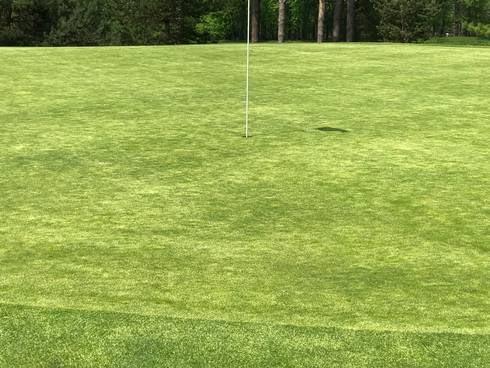So, you implemented your PGR program this year like every other year, but you got annual bluegrass seed head production anyway.
 Don't worry. You're not alone and there's nothing wrong with your chemistry. Chances are, say researchers at Michigan State, your timing probably was off.
Don't worry. You're not alone and there's nothing wrong with your chemistry. Chances are, say researchers at Michigan State, your timing probably was off.Efforts to suppress seedheads at the Hancock Turfgrass Research Center in East Lansing were unsuccessful and, according to reports, superintendents at golf courses throughout Michigan also struggled this year, according to Kevin Frank, Ph.D., associate professor at MSU, and research assistant Aaron Hathaway.
Researchers at MSU applied different combinations of plant growth regulators using the Proxy/Primo GDD timer within the application window of March 30-May 1 based on 200 and 500 GDDs base 32 degrees Fahrenheit, available at GDD Tracker.
First applications were made April 25. The result was some seedhead suppression, however, more than 10 percent of the surface area was covered with seedheads. They waited for the end of the application window because the long, cold spring delayed mowing until late April.
Many in Michigan experienced the same process by waiting for growth before making the first application. In 2017, the application window using the same GDD model ended April 10.
It's difficult to know exactly why many seedhead suppression efforts failed this year. However, here are a few thoughts.
Seedhead production in annual bluegrass can be affected by many factors. MSU researchers use a GDD model that only accounts for the accumulation of heat units. There may be other climatic factors that affect the timing of peak seedhead flush that aren't being measured. Likewise, annual bluegrass is biologically diverse, so seedhead production can vary greatly.
Some research suggests that a PGR application must be timed before a seedhead emerges from the plant. The model is designed to signal application timing before emergence. Seedheads may emerge and not be easily viewed without some hands-on investigation of plants, so investigate. Look closely for emergence in south-facing slopes or other areas that might heat up faster than others. These observations can help fine-tune your application even within the window given by GDD models. In the end, apply early rather than late. Once seedhead emergence begins, it is too late.
Start Proxy plus Primo applications in late fall. If you are spending the time and money in spring to control seedheads, the researchers said, add a fall-timed application for a little insurance. These applications followed by GDD-timed Proxy plus Primo applications in spring have proven to consistently provide better seedhead suppression than spring applications alone.

